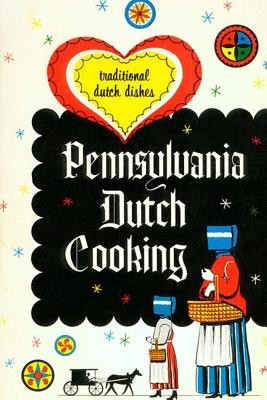
- We will send in 10–14 business days.
- Publisher: CreateSpace Independent Publishing Platform
- ISBN-10: 1495977773
- ISBN-13: 9781495977770
- Format: 15.2 x 22.9 x 1.1 cm, softcover
- Language: English
- SAVE -10% with code: EXTRA
Pennsylvania Dutch Cooking (e-book) (used book) | bookbook.eu
Reviews
Description
In 1683 the Plain Sects began to arrive in William Penn's Colony, seeking a land of peace and plenty. They were a mixed people; Moravians from Bohemia and Moravia, Mennonites from Switzerland and Holland, the Amish, the Dunkards, the Schwenkfelds, and the French Huguenots. After the lean years of clearing the land and developing their farms, they established the peace and plenty they sought. These German-speaking people were originally called the Pennsylvania Deutsch, but time and custom have caused them to be known to us as the Pennsylvania Dutch. The Pennsylvania Dutch are a hard working people and as they say, "Them that works hard, eats hearty." The blending of recipes from their many home lands and the ingredients available in their new land produced tasty dishes that have been handed down from mother to daughter for generations. Their cooking was truly a folk art requiring much intuitive knowledge, for recipes contained measurements such as "flour to stiffen," "butter the size of a walnut," and "large as an apple." Many of the recipes have been made more exact and standardized providing us with a regional cookery we can all enjoy. Food is abundant and appetites are hearty in the Pennsylvania Dutch country. The traditional dishes are relatively simple and unlike most regional cookery the ingredients are readily available. Best of all, no matter who makes them the results are "wonderful good."
- Publisher: CreateSpace Independent Publishing Platform
- ISBN-10: 1495977773
- ISBN-13: 9781495977770
- Format: 15.2 x 22.9 x 1.1 cm, softcover
- Language: English English
In 1683 the Plain Sects began to arrive in William Penn's Colony, seeking a land of peace and plenty. They were a mixed people; Moravians from Bohemia and Moravia, Mennonites from Switzerland and Holland, the Amish, the Dunkards, the Schwenkfelds, and the French Huguenots. After the lean years of clearing the land and developing their farms, they established the peace and plenty they sought. These German-speaking people were originally called the Pennsylvania Deutsch, but time and custom have caused them to be known to us as the Pennsylvania Dutch. The Pennsylvania Dutch are a hard working people and as they say, "Them that works hard, eats hearty." The blending of recipes from their many home lands and the ingredients available in their new land produced tasty dishes that have been handed down from mother to daughter for generations. Their cooking was truly a folk art requiring much intuitive knowledge, for recipes contained measurements such as "flour to stiffen," "butter the size of a walnut," and "large as an apple." Many of the recipes have been made more exact and standardized providing us with a regional cookery we can all enjoy. Food is abundant and appetites are hearty in the Pennsylvania Dutch country. The traditional dishes are relatively simple and unlike most regional cookery the ingredients are readily available. Best of all, no matter who makes them the results are "wonderful good."


Reviews